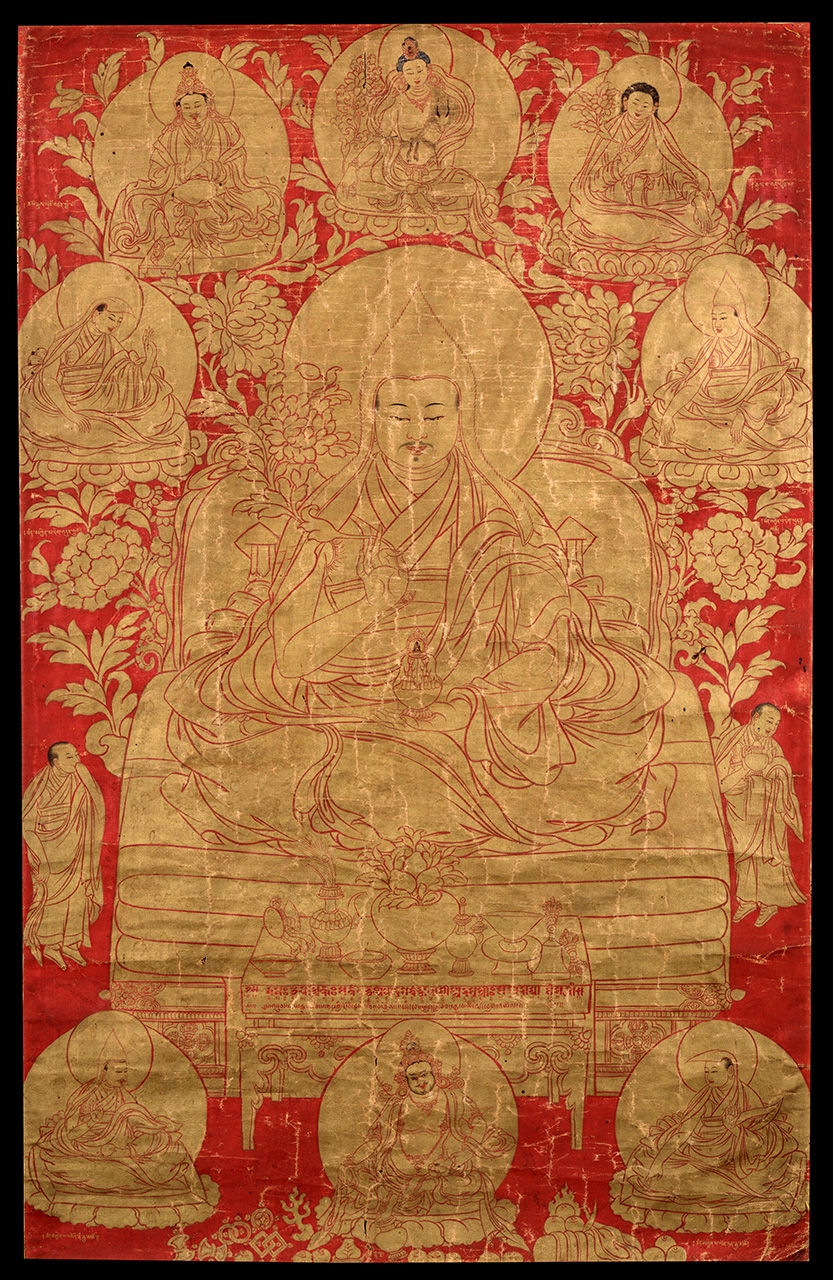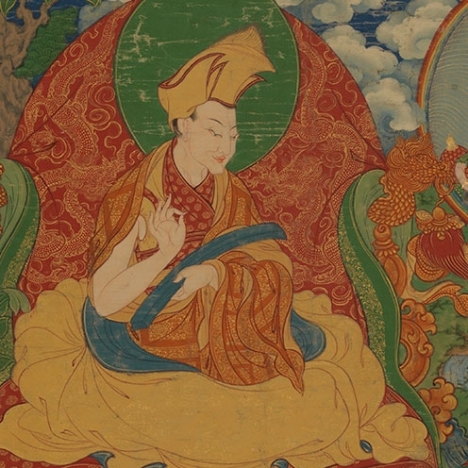
The Fifth Dalai Lama, Ngagwang Lobzang Gyatso (1617–1682), depicted here holding a lotus and a vase of longevity, was the first theocratic ruler of a unified Tibet. His status is expressed through a language of divine inheritance, the succession of past glorious empires through reincarnation. The Fifth Dalai Lama identified himself as an incarnation of the Bodhisattva of Compassion, Avalokiteshvara, depicted in this painting at top center. Avalokiteshvara was not only the patron deity of Tibet but also the founder of the Tibetan Empire, Songtsen Gampo (ruled 617-650, depicted at top left), was considered his emanation. By asserting himself as an emanation of Avalokiteshvara, the Dalai Lama was symbolically declaring that his was a divine kingship and more specifically that he was in the lineage of the Tibetan emperor who first united Tibet and thus positioned himself as the rightful inheritor of the old Tibetan Empire.
Red background paintings such as this are associated with Buddha Amitabha and his lotus family, which includes the incarnations of the Dalai Lamas. In this sophisticated painting the figures are outlined in red, and their surfaces are painted with an undercoat of yellow and an overcoat of gold. Fine patterns are polished into this gold ground to create a subtle ornamentation in the painting surface.
26 1/8 x 16 5/8 in.
F1996.29.3, HAR506
- https://dev.rubinmuseum.org/images/content/801/f1996.29.3har506__zoom.jpg
- https://dev.rubinmuseum.org/images/content/801/f1996.29.3har506__zoom.jpg


